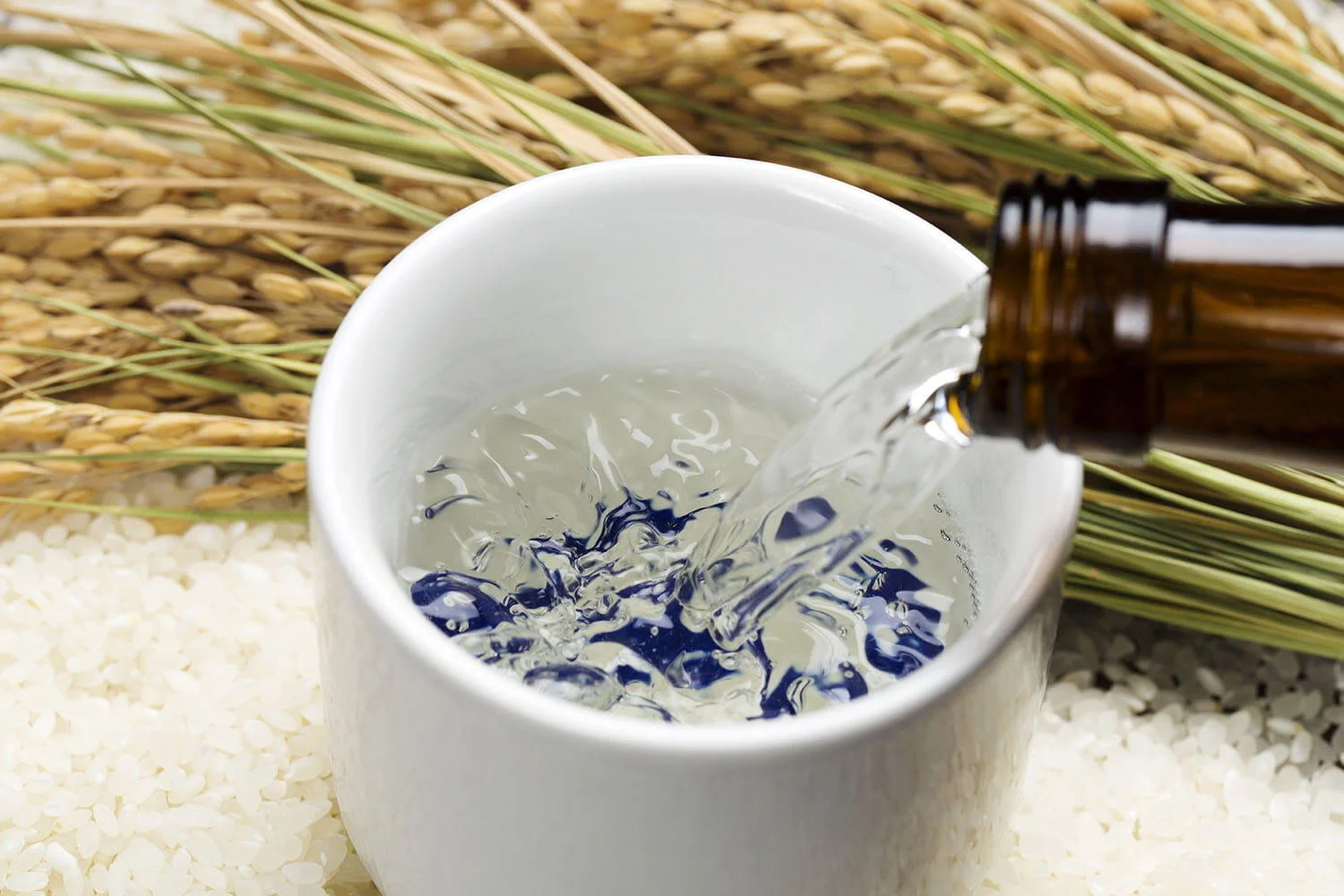Grades of sake: A Basic Guide to Levels of Quality
What Makes One Type of Sake Different from Another?
Sake is an enormously versatile drink with a colossal sense of variety to it. It can range from savory rich junmai-meaning sake just made with pure rice, koji and water-brews that stand up to rich, hearty flavors, to the most delicate and subtle crisp, citrus ginjo sake - where the rice is milled down to 60% of its original size and fermented at a low temperature - not to mention dessert sake, aged sake, mulled sake, sparkling sake and more.
Among the factors that can influence taste and subsequent grade are the water used, brewing technique, the serving temperature, whether it has been diluted or fortified, the style of sake rice in the brew and importantly the extent to which the rice has been milled, eliminating the starchier flavors of the grain and allowing more fragrant notes to come to the fore.
Six Main Sake Grades
While there are many variations for producing sake, such as cloudy nigori sake, unpasteurized namazake or aged koshu sake, there are six main grades of sake that relate to the extent to which the rice is milled away and if there are any additives. These help customers know what to expect and are as follows:
Junmai Daiginjo
Junmai daiginjo essentially means a very special brew made using pure rice. Daiginjo is premium grade sake, often regarded as some of the best grade on the market and the best that sake producers have to offer.
Here, the grain of sake rice must be milled down to at least 50% of its initial size. This removes much of the starchy elements and allows for lighter, fruitier fragrances to come into their own. Rice in this category can be polished to a far smaller size than this.
The junmai element means there are no additives, such as sugar or distilled alcohol, and that it is made up of koji mold that is key to sake production, water, yeast and rice. These result in fine, pure expressions of sake.
Sake Network Recommendation
Junmai Daiginjo "Setsugekka"Setsugekka from Ryozeki Shuzo brewery is a limited aromatic type junmai daiginjo sake that offers the unique umami style that has given the Hokuriku brewery its distinct identity. Try this one-of-a-kind sake for a superior experience.Go to Sake Online Store
Junmai Daiginjo "Sakuramuromachi Gold Omachimainosato"This faintly aromatic junmai ginjo, made with 100% Bizen-Omachi rice from Okayama Prefecture, has been given the Monde Selection Gold Award for 17 years running, along with honors from the Beverage Tasting Institute and the San Francisco World Spirits Competition.Go to Sake Online Store
Daiginjo
A daiginjo is a very special brew, with the "dai" or "big" prefix here meaning very. However, in contrast to junmai daiginjo, it isn't "pure rice" meaning that while the sake rice has to be milled down to at least 50%, as with junmai ginjjo, distilled alcohol can be added.
The high refinement means a daiginjo has fewer starchy impurities when compared to other sake grades like ginjo or honjozo. This leads to significantly complex yet light floral flavors and aromas that can be balanced out with distilled alcohol, unlike junmai daiginjo
Sake Network Recommendation
Daiginjo "Hakuryu"A highly decorated daiginjo, Hakuryu from the Niigata brewery of the same name has wowed sake fans for many years. With the use of slowly fermented Koshi Tanrei rice, this aromatic sake has maintained an unmatched level of excellence that continues to this day, obtaining the highest honors in Japan and throughout the world along the way.Go to Sake Online Store
Junmai Ginjo
As with junmai daiginjo, junmai ginjo essentially means a special brew made using pure rice. These brews are made with sake rice polished to at least 60% and then developed using low-temperature fermentation, meaning that they have slightly more impurities than daiginjo sake but fewer than general. These are still premium sake with a great deal to offer, still with very clean and floral notes that have a hint more complexity of the starch than daiginjo generally does.
Again, the junmai element means that there are no additives like distilled alcohol, meaning that this is the unmistakable result a sake made up of water, koji mold, yeast and rice milled with 60% of the grain remaining.
Sake Network Recommendation
Junmai Ginjo "Kinshi Masamune"Winner of the US National Sake Appraisal gold medal, as well as the Anuga Wine Special's gold award, Kinshi Masamune brewery's sake of the same name boasts an elegant flavor. Thanks in large part to the slow fermentation of 100% Iwai brewer's rice, the result is an award winning junmai ginjo.Go to Sake Online Store
Junmai Ginjo "Kinteki"Kinteki is a junmai ginjo that immediately skyrocketed in popularity after receiving an "outstanding" 91 points from Rober Parker's Wine Advocate magazine. This refreshing smooth sake owes its rich umami to the use of brewing rice sourced in Hokkaido.Go to Sake Online Store
Ginjo
A ginjo is a special brew, a style first popularized in the 1980s with the ginjo boom that set the scene for much of what we see in the sake industry today. These are milled to 60% or under and go through a process of low-temperature fermentation.
Unlike junmai ginjo, distilled alcohol can be added allowing for more balance. Ginjo has more impurities due to the higher amount of starch in the grain than daiginjo, yet fewer than the likes of honjozo and junmaishu. These are often light yet complex with the taste of fresh fruits, perfect when chilled.
Sake Network Recommendation
Ginjo "Bonbori"We use Koshi Tanrei daiginjo rice developed by Niigata Prefecture and polish it to 50% to produce a pure sake that is immediately processed over heat and then stored for three months in a snow cavern. Using proprietary yeast cultures allows us to produce a smooth brew found nowhere else. This sake has a clean finish and a transparent, clear feeling that will not make you feel sick.Go to Sake Online Store
Junmai
Junmai, as we have already seen in junmai daiginjo and junmai ginjo, is simply the Japanese word for "pure rice", and when used to refer to sake, it means that no additional alcohol or sugar has been mixed in with the sake, just the result of rice, water, yeast, and koji.
Adding alcohol was commonplace during times of rice shortages, which is also why when sake became known outside of Japan, it was thought of as needing to be served hot to mask the sometimes-unwanted flavors.
On its own, the junmai label doesn't entail any milling requirements and as such, they can vary enormously in style depending on what is done to it.
Sake Network Recommendation
Tokubetsu Junmai-shu "Joyo"This junmai-shu from Joyo Shuzo brewery credits its elegant flavor to the use of 100% Iwai rice, straight from Kyoto Prefecture. This rich type sake offers complex umami notes with a sharp acidic finish. This highly sought-after junmai is available in limited supply.Go to Sake Online Store
Honjozo
A honjozo or hojozoshu is a "genuine brew", using rice that has been polished to at least 70%. Unlike junmai, honjozo contains a small addition of distilled alcohol to round out the sake's flavor and aroma profiles.
These sake are versatile and typically smooth-tasting, excellent served both warm or chilled. The addition of alcohol does not make it necessarily taste fortified, nor are should these be thought of as necessarily inferior to junmai grades.
The alcohol used is a "brewer's alcohol", a distilled addition made from rice. These are generally lighter and less complex than junmais, but nonetheless, honjozo can yield interesting results.
Sake Network Recommendation
Honjozo "Echigo Sekkobai"A bright and bracing dry flavor brings out the umami of the rice. This makes a great daily brew and is delicious served cold, hot, or any way you like it.Go to Sake Online Store
Futsuu-shu: The Other Grade of Sake
Interestingly, the majority of sake produced does not fall into any of the above grades and is instead categorized as futsuu-shu, meaning ordinary sake. While there are no production rules for this grade, the sake rice is typically milled to 70% or below and some sake in this category use table rice to create their brews instead of specialist sake rice varietals.
>Brewer's alcohol is also often added in higher quantities than in honjozo. These are cheap and cheerful sake and although some may lack the complexity of higher-grade sake, they are nonetheless often enjoyable, especially at warmer serving temperatures.
Sake Grades vs Other Factors
Sake, like wine, is capable of enormous diversity as shown by the above grades. These aren't the only factors that can affect the end result of sake, with others including whether it has been diluted, filtered, pasteurized or aged.
Of course, the sake rice and water used are also crucial in sake and often help to create a sense of terroir. Nonetheless, the above grades are common in the sake world and it's a good idea to understand them when deciding on a sake that suits your tastes.
To learn more beyond the topic of sake grades, visit our extensive Beginner's Guide.



